Ditapis dengan

laporan pelaksanaan kegiatan advance tug boat operation training 21 s.d 24 me…
- Edisi
- 2018
- ISBN/ISSN
- -
- Deskripsi Fisik
- 22 p.
- Judul Seri
- -
- No. Panggil
- IPC REP 2018 ADV p C.1
- Edisi
- 2018
- ISBN/ISSN
- -
- Deskripsi Fisik
- 22 p.
- Judul Seri
- -
- No. Panggil
- IPC REP 2018 ADV p C.1
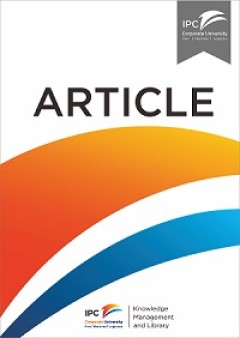
Time compression in the supply chain
Claims that time compression is a powerful source of competitive advantage that remains relatively underutilized in UK busineses. Details the research undertaken by the Warwick Manufacturing Group’s time compression programme (TCP) on the applications of time‐based approaches with a number of partner companies. Explores the nature of time compression in relation to the fundamental principle…
- Edisi
- Vol. 96 Issue: 2, pp.12-16
- ISBN/ISSN
- -
- Deskripsi Fisik
- 7 p.
- Judul Seri
- Industrial Management & Data Systems
- No. Panggil
- ATC LO BEE t

Time compression in the supply chain : information management is the vital …
Claims that time compression is a powerful source of competitive advantage that remains relatively underutilized in UK busineses. Details the research undertaken by the Warwick Manufacturing Group’s time compression programme (TCP) on the applications of time‐based approaches with a number of partner companies. Explores the nature of time compression in relation to the fundamental principle…
- Edisi
- Vol. 96 Issue: 2, pp.12-16
- ISBN/ISSN
- 0263-5577
- Deskripsi Fisik
- 7 p.
- Judul Seri
- Time compression in the supply chain
- No. Panggil
- ATC LO BEE t C.1

Design for Producibility in Swedish Manufacturing Industries
Integration and co-operation are today considered to be a necessary element for the proper functioning of modern industrial concepts, which include simultaneous or concurrent engineering within product development, lean production within production, and total quality management within modern quality work. The issues concerning integration and co-operation are treated differently by different au…
- Edisi
- Vol. 1 No. 6, 1994, pp. 27-32
- ISBN/ISSN
- 1352-3074
- Deskripsi Fisik
- 8 p.
- Judul Seri
- World Class Design to Manufacture
- No. Panggil
- ATC MR CAR d

The Third-Party Logistics Services and Globalization of Manufacturing
Cross-border production chains of manufacturing require coordination and logistics. Third-party logistics services have thus taken this role as a link in the globalization of economic activities. Distriparks, a provider of total logistics to manufacturing, have emerged in Singapore to offer customized distribution and inventory management. Established as a traditional entrepoˆt by internationa…
- Edisi
- Vol. 7, No. 1, 89–104, 2002
- ISBN/ISSN
- 1469-9265
- Deskripsi Fisik
- 18 p.
- Judul Seri
- International Planning Studies
- No. Panggil
- ATC LO ZHU t

Redesigning international manufacturing and logistics structures
Introduction Border-crossing activities of many firms have increased substantially during the past three decades, either by international trade or by establishing manufacturing and/or distribution facilities abroad. Many observers consider these “globalization” processes to be one of the major business challenges for the 1990s and beyond[1,2]. The design and control of emerging internation…
- Edisi
- Vol. 27 No. 7, 1997, pp. 377-394.
- ISBN/ISSN
- 0960-0035
- Deskripsi Fisik
- 20 p.
- Judul Seri
- International Journal of Physical Distribution & Logistics Management
- No. Panggil
- ATC LO VOS r

Framing the Nexus of Globalisation, Logistics and Manufacturing in Europe
Under the ongoing influence of globalisation, supply chains have changed significantly. New logistics and manufacturing systems have emerged, causing longer transport distances and increasing transport emissions. The existing research into the sustainability impacts of freight transport has largely viewed it as being a macro-level economic and political phenomenon and has ignored the interdepen…
- Edisi
- Vol. 34, No. 6, 674–690
- ISBN/ISSN
- -
- Deskripsi Fisik
- 19 p.
- Judul Seri
- Transport Reviews: A Transnational Transdisciplinary Journal
- No. Panggil
- ATC LO AKY f

A Comparative Study of Assembly Planning in Traditional and Virtual Environments
This paper presents an experiment that investigated the potential benefits of virtual reality (VR) environments in supporting assembly planning. In the experiment, fifteen subjects performed an assembly planning task in three different conditions: a traditional engineering environment (TE), a nonimmersive desktop VR (DVR) environment, and an immersive care automatic virtual environment (CAVE) V…
- Edisi
- VOL. 29, NO. 4, NOVEMBER 1999
- ISBN/ISSN
- -
- Deskripsi Fisik
- 11p
- Judul Seri
- A Comparative Study of Assembly Planning in Traditional and Virtual Environments
- No. Panggil
- ATC LO NON a
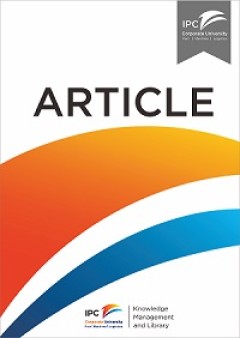
Human resources development and integrated manufacturing systems
- Edisi
- Vol. 12 Iss 3 pp. 195 - 204
- ISBN/ISSN
- 0957-6061
- Deskripsi Fisik
- 12 p., + atc., 21 cm.
- Judul Seri
- Integrated Manufacturing Systems
- No. Panggil
- ATC LE SUN h
- Edisi
- Vol. 12 Iss 3 pp. 195 - 204
- ISBN/ISSN
- 0957-6061
- Deskripsi Fisik
- 12 p., + atc., 21 cm.
- Judul Seri
- Integrated Manufacturing Systems
- No. Panggil
- ATC LE SUN h
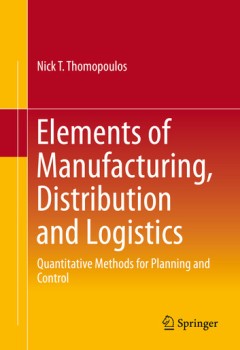
Elements of danufacturing, distribution and logistics: quantitative methods f…
- Edisi
- -
- ISBN/ISSN
- 978-3-319-26862-0
- Deskripsi Fisik
- -
- Judul Seri
- -
- No. Panggil
- TXT LO THO e
- Edisi
- -
- ISBN/ISSN
- 978-3-319-26862-0
- Deskripsi Fisik
- -
- Judul Seri
- -
- No. Panggil
- TXT LO THO e
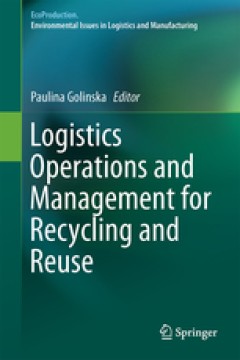
Logistics operations, supply chain management and sustainability
- Edisi
- -
- ISBN/ISSN
- 978-3-319-07287-6
- Deskripsi Fisik
- -
- Judul Seri
- -
- No. Panggil
- TXT LO Gol l
- Edisi
- -
- ISBN/ISSN
- 978-3-319-07287-6
- Deskripsi Fisik
- -
- Judul Seri
- -
- No. Panggil
- TXT LO Gol l
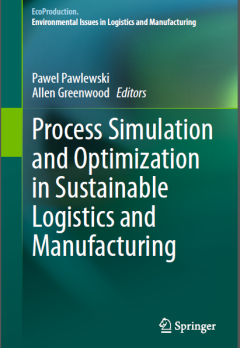
Process simulation and optimization in sustainable logistics and manufacturing
- Edisi
- -
- ISBN/ISSN
- 978-3-319-07347-7
- Deskripsi Fisik
- -
- Judul Seri
- -
- No. Panggil
- TXT LO Paw p
- Edisi
- -
- ISBN/ISSN
- 978-3-319-07347-7
- Deskripsi Fisik
- -
- Judul Seri
- -
- No. Panggil
- TXT LO Paw p

An empirical study of the imperatives for a supply chain implementation pro…
Singapore’s electronics manufacturers are facing many questions. In the computer hard-drive industry, where the problem of obsolescence is common and where a product’s lifecycle may be only six months, manufacturers are anxious to know what the next order-winning criteria will be. Since low labour costs are no longer a key factor, many organisations are developing their competencies in rese…
- Edisi
- Volume 9 · Number 4 · 2004
- ISBN/ISSN
- -
- Deskripsi Fisik
- 12 p.
- Judul Seri
- Supply Chain Management: An International Journal
- No. Panggil
- ATC LO BEN a

A supply chain configuration model for reassessing global manufacturing in China
Global manufacturers have faced unprecedented cost pressures in China because of Chinese currency appreciation, rising labour costs, higher oil prices and reduced value-added tax rebates. This paper aims to reassess the decision of operating global manufacturing facilities in China.
- Edisi
- Vol. 24 No. 5, 2013
- ISBN/ISSN
- -
- Deskripsi Fisik
- 21 p .
- Judul Seri
- -
- No. Panggil
- ATC LO LIU a

What determines user satisfaction in ERP projects : benefits, barriers or risks?
The purpose of this paper is to identify the effects of benefits, barriers and risks on user satisfaction in ERP projects.
- Edisi
- Vol. 22 No. 6, 2009 pp. 690-708
- ISBN/ISSN
- 1741-0398
- Deskripsi Fisik
- 21 P.
- Judul Seri
- Journal of Enterprise Information Management
- No. Panggil
- ATC MG SAA w

Time compression and supply chain management - a guided tour
Modern supply chains are expected to respond rapidly, effectively and efficiently to changes in the marketplace. Simultaneously there is the drive to achieve world class customer service levels coupled with minimum reasonable inventory (MRI). We thus have the classic conflict of interests between marketing, production and materials management. Marketing wants the complete product range availabl…
- Edisi
- Vol. 1 Issue: 1, pp.15-27
- ISBN/ISSN
- -
- Deskripsi Fisik
- 15 p.
- Judul Seri
- Logistics Information Management
- No. Panggil
- ATC LO TOW t

An empirical analysis of core competence for high-tech firms and traditional …
The main purposes of this paper are as follows. Exploring whether there is significant difference in the model of core competence between H-T firms and T-Ms in Taiwan. Investigating whether there is significant difference in the explanatory power of dimensions of core competence both for H-T firms and T-Ms in Taiwan.
- Edisi
- Vol. 26 No. 2, 2007 pp. 159-168
- ISBN/ISSN
- -
- Deskripsi Fisik
- 12 p.
- Judul Seri
- Journal of Management Development
- No. Panggil
- ATC LO CHI a

An integrated approach to re-engineering material and logistics control
WMC Ltd is a medium‐sized company which manufactures and distributes mechanical/ electrical equipment for the construction industry. Constitutes a case study which illustrates the re‐engineering methodology developed for WMC in order to improve its material and logistics control strategies. The first re‐engineering approach initiated by WMC was to make wholesale changes affecting internal…
- Edisi
- Vol. 27 No. 3/4, 1997
- ISBN/ISSN
- -
- Deskripsi Fisik
- 15 p.
- Judul Seri
- International Journal of Physical Distribution & Logistics
- No. Panggil
- ATC LO LEW a

Transportation systems in Hong Kong and Southern China: A manufacturing indus…
Hong Kong has been a major entrepôt for China for decades and its intermediate role has been enhanced in recent years. With the open door policy of China, Hong Kong manufacturers have relocated extensively their low‐cost operations to the Pearl River Delta in Southern China. Under the outward processing arrangement, raw materials, components and work‐in‐progress are shipped to China for …
- Edisi
- Vol. 26 Iss 10 pp. 46 - 59
- ISBN/ISSN
- -
- Deskripsi Fisik
- 16 p .
- Judul Seri
- International Journal of Physical Distribution & Logistics Management
- No. Panggil
- ATC LO TAN t

The successful implementation of MRPII via a hierarchical modelling approach
Manufacturing Resources Planning (MRPII) is recognized as being an effective management system that has an excellent planning and scheduling capability which can offer a dramatic increase in customer service, significant gains in productivity, much higher inventory turns, and a greater reduction in material costs. Many companies world‐wide have attempted to implement MRPII systems. Many of th…
- Edisi
- Vol. 11 Issue: 3, pp.160-170
- ISBN/ISSN
- -
- Deskripsi Fisik
- 13 p.
- Judul Seri
- Logistics Information Management
- No. Panggil
- ATC LO YAM t

Applied process knowledge and market performance: the moderating effect of en…
Challenges the idea of an unconditional and positive influence of knowledge on performance without regard to environmental uncertainty. Focuses on applied process knowledge spanning the supply chain (i.e. considers supplier, internal, and customer sources). A survey of 208 manufacturing firms found the association between applied process knowledge and firm market performance is positive and sta…
- Edisi
- Vol. 5 Issue: 3, pp.264-278
- ISBN/ISSN
- -
- Deskripsi Fisik
- 16 p .
- Judul Seri
- Journal of Knowledge Management
- No. Panggil
- ATC LO GER a

Just‐in‐time functional model: empirical test and validation
It has been proposed that the just‐in‐time (JIT) philosophy can be effectively integrated systemwide to yield increased efficiencies and excellence throughout an organization. Greater understanding is needed as to what this entails. The researchers empirically test and attempt to validate a previously developed basic functional model of JIT comprising three components – respect for people…
- Edisi
- Vol. 24 Issue: 6, pp.20-26
- ISBN/ISSN
- -
- Deskripsi Fisik
- 10 p.
- Judul Seri
- International Journal of Physical Distribution & Logistics Management
- No. Panggil
- ATC LO SPE j

Utilization of time-based strategies: Creating distribution flexibility/respo…
Explores how firms can use time‐based strategies within their distribution operations. Exploratory results are presented detailing strategic distribution responses employed to meet competitive challenges and gain competitive advantages. These firms have proactively worked to make their operations more flexible and allow them to respond more quickly to customer requests. They have developed ca…
- Edisi
- Vol. 15 Issue: 2, pp.54-60
- ISBN/ISSN
- -
- Deskripsi Fisik
- 10 p.
- Judul Seri
- International Journal of Operations & Production Management
- No. Panggil
- ATC LO DAU u

Managing Variety in Automotive Logistics With the Rule of Three
In this paper, the management of variety in automobile manufacturing is broadened from simply considering the choice of models, options and parts to include strategic issues in sourcing and logistics systems. Some of the major cost elements associated with varietal increase are identified, leading into a discussion of how logistics system redesign can reduce or, indeed, eliminate the unwanted i…
- Edisi
- Vol. 5 Issue: 2, pp.29-40
- ISBN/ISSN
- -
- Deskripsi Fisik
- 14 p.
- Judul Seri
- The International Journal of Logistics Management
- No. Panggil
- ATC LO COO m

The paradox of logistics in Europe
The completion of the Single European Market in 1992 has major implications for logistics throughout the 1990s and beyond. However, as logistics has come under the spotlight, many managers and academics have come to realize that their understanding of the field is limited. In particular, both the differences in practice between countries and the future directions for innovation in logistics rem…
- Edisi
- Vol. 2 Issue: 2, pp.42-54
- ISBN/ISSN
- -
- Deskripsi Fisik
- 15 p.
- Judul Seri
- The International Journal of Logistics Management
- No. Panggil
- ATC LO COO t

Manufacturing and supply chain flexibility – towards a tool to analyse prod…
The purpose of this paper is to explore how the manufacturing and supply chain flexibility impact on the ability to transfer production between the units, i.e. production network coordination. To take advantage of available opportunities for different actors and locations, companies need to effectively transfer production.
- Edisi
- Vol. 7 No. 2, 2014
- ISBN/ISSN
- -
- Deskripsi Fisik
- 24 p.
- Judul Seri
- Strategic Outsourcing: An International Journal
- No. Panggil
- ATC LO WAN m

Manufacturing in a Peripheral Location: An Assessment of the Logistical Penal…
In terms of logistics, manufacturers located in peripheral areas are generally considered to be at a disadvantage. Surveys of Scottish manufacturers suggest that any logistical disadvantage is likely to stem more from inadequacies in the quality of transport services than from higher movement costs. The paper attempts to explain why manufacturers in peripheral areas do not incur a significant t…
- Edisi
- Vol. 3 Issue: 2, pp.31-48,
- ISBN/ISSN
- -
- Deskripsi Fisik
- 20 p.
- Judul Seri
- The International Journal of Logistics Management
- No. Panggil
- ATC LO KIN m

Spare parts logistics for the Chinese market
Despite the proven benefits of high‐performing spare parts logistics, recommendations on how to organize spare parts logistics in China are rather rare. The absence of spare parts logistics concepts for China is surprising, since the spare part business is the profit pool of the capital goods industry: spare parts create about 17 percent of the industry's total revenue. The margins involved i…
- Edisi
- Vol. 18 Issue: 6, pp.748-768
- ISBN/ISSN
- -
- Deskripsi Fisik
- 23 p.
- Judul Seri
- Benchmarking: An International Journal
- No. Panggil
- ATC LO GEB s

Reverse logistics operations in paper industry: a case study
Reverse logistics is an issue that has attracted the attention of researchers since the last decade due to an ever‐increasing increased awareness about economic, environmental and social benefits associated with them. In this paper, we report a case study of an Indian paper manufacturing company. For this company, proper management of reverse logistics is key to its survival and growth. SAP�…
- Edisi
- Vol. 3 Issue: 2, pp.88-94
- ISBN/ISSN
- -
- Deskripsi Fisik
- 9 p.
- Judul Seri
- Journal of Advances in Management Research
- No. Panggil
- ATC LO NEW r

Digital manufacturing-driven transformations of service supply chains for com…
The purpose of this paper is to explore the forms that combinations of digital manufacturing, logistics and equipment use are likely to take and how these novel combinations may affect the relationship among logistics service providers (LSPs), users and manufacturers of equipment.
- Edisi
- Volume 19 · Number 4 · 2014 · 421–430
- ISBN/ISSN
- -
- Deskripsi Fisik
- 12 p.
- Judul Seri
- Supply Chain Management: An International Journal
- No. Panggil
- ATC LO PAR d

Remanufacturing in Asia: location choice and outsourcing
Remanufacturing is a process whereby value from old products is recovered by replacing and recovering used components to bring such products to a new or like-new state. Today, both original equipmentmanufacturers (OEMs) and third parties are engaged in remanufacturing activities, investing in many locations throughout Asia. The purpose of this paper is to examine the reasons for initiating rema…
- Edisi
- Vol. 25 No. 1, 2014 pp. 20-34
- ISBN/ISSN
- -
- Deskripsi Fisik
- 17 p.
- Judul Seri
- The International Journal of Logistics Management
- No. Panggil
- ATC LO SOU r

Logistics information systems adoption: an empirical investigation in Brazil
The purpose of this paper is to examine whether the level of logistics information systems (LIS) adoption in manufacturing companies is influenced by organizational profile variables, such as the company’s size, the nature of its operations and their subsectors.
- Edisi
- Vol. 110 No. 6, 2010
- ISBN/ISSN
- -
- Deskripsi Fisik
- 20 p.
- Judul Seri
- Industrial Management & Data Systems
- No. Panggil
- ATC LO AND l

Strategic logistics management
The material included is concise and to the point. The briefings have been designed in order that a range of issues and ideas can be quickly taken on board by the reader. The aim is not to explore each issue in depth, such learned papers will be published in this journal throughout the year. It is to look at the plethora of challenges facing logistics practitioners and researchers in the intere…
- Edisi
- Volume 27 Number 2 1997
- ISBN/ISSN
- -
- Deskripsi Fisik
- 72 p .
- Judul Seri
- International Journal of Physical Distribution & Logistics Management
- No. Panggil
- ATC LO SAN s

An approach to analyze logistic outsourcing problem in medium-scale organizat…
The purpose of this paper is to make out a complete solution to logistic outsourcing problem in a medium-scale organization by using consistent fuzzy preference relation (CFPR) and vlsekriterijumska optimizacija i kompromisno resenje (VIKOR) method.
- Edisi
- Vol. 23 Iss 7 pp. 885 - 898
- ISBN/ISSN
- 1741-038X
- Deskripsi Fisik
- 16 p.
- Judul Seri
- Journal of Manufacturing Technology Management
- No. Panggil
- ATC LO KUM a

Applying digital manufacturing technology to ship production and the maritime…
THis paper is mainly concerner with the digital manufacturing
- Edisi
- Vol. 13 Iss 5
- ISBN/ISSN
- -
- Deskripsi Fisik
- 13 pages
- Judul Seri
- Integrated Manufacturing Systems
- No. Panggil
- ATC MR KIM a

Aligning supply chain transportation strategy with industry characteristics: …
The purpose of this paper is to propose that transportation modal mix in global supply chains is a result of the strategic alignment between industry characteristics and supply chain strategies.
- Edisi
- Vol. 45 No. 9/10, 2015 pp. 837-860
- ISBN/ISSN
- -
- Deskripsi Fisik
- 26 p.
- Judul Seri
- International Journal of Physical Distribution & Logistics Management
- No. Panggil
- ATC LO BRI a

Applied Logistics Knowledge Impact On Financial Performance
Purpose – The purpose of this paper is to examine the relationships between internal process improvement investments, applied channel logistics knowledge, and financial performance for make-to-order (MTO) and make-to-stock (MTS) manufacturers. This study takes the position that knowledge, specifically tacit or applied knowledge, may serve as a key indicator of organizational performance. …
- Edisi
- Vol. 31 Iss 8 pp
- ISBN/ISSN
- 0144-3577
- Deskripsi Fisik
- 21 p
- Judul Seri
- International Journal of Operations & Production Management
- No. Panggil
- ATC LO BIR a

Operational effects and firms' responses: Perspectives of New Zealand apparel…
The purpose of this paper is to clarify the impact of international outsourcing on manufacturing strategy and performance of apparel manufacturing firms. The authors aim to show how managers address the effects of international outsourcing on four dimensions of manufacturing strategy – cost, quality, flexibility and delivery.
- Edisi
- Vol. 22 No. 3, 2011 pp. 306-323
- ISBN/ISSN
- -
- Deskripsi Fisik
- 20 p.
- Judul Seri
- The International Journal of Logistics Management
- No. Panggil
- ATC LO LIN o

A comparative study on the use of third party logistics services by Singapore…
The aim of this research is to undertake a comparative analysis on the use of third party logistics (3PL) services by manufacturing firms in Singapore and Malaysia.
- Edisi
- Vol. 36 No. 9, 2006
- ISBN/ISSN
- -
- Deskripsi Fisik
- 15 p.
- Judul Seri
- International Journal of Physical Distribution & Logistics Management
- No. Panggil
- ATC LO SAD a

The realities of quick response in the grocery sector: : a supplier viewpoint
Presents a supplier view of the realities of quick response supply chain partnershipping in the grocery sector. Discusses the factors which determine the level of stock held by manufacturers and retailers and the resulting conflicts which occur in reconciling policies pursued by both parties. Asks why manufacturers and retailers want quick response partnerships and what their objectives are.
- Edisi
- Vol. 24 Issue: 10, pp.33-39
- ISBN/ISSN
- -
- Deskripsi Fisik
- 14 p.
- Judul Seri
- International Journal of Physical Distribution & Logistics Management
- No. Panggil
- ATC LO WHI t

The realities of quick response in the grocery sector: : a supplier viewpoint
Presents a supplier view of the realities of quick response supply chain partnershipping in the grocery sector. Discusses the factors which determine the level of stock held by manufacturers and retailers and the resulting conflicts which occur in reconciling policies pursued by both parties. Asks why manufacturers and retailers want quick response partnerships and what their objectives are.
- Edisi
- Vol. 24 Issue: 10, pp.33-39
- ISBN/ISSN
- -
- Deskripsi Fisik
- 9 p.
- Judul Seri
- International Journal of Physical Distribution & Logistics Management
- No. Panggil
- ATC LO WHI t

Time-based manufacturing logistics
Proposes that, due to the changing market, companies can no longer work with the logistic systems of the past but must develop new logistic concepts, logistic management and control systems to support the new concepts. Discusses the importance of order penetration point (OPP) within the development of time‐based management and control systems. Concludes that creativity in product development,…
- Edisi
- Vol. 8 Issue: 3, pp.30-36
- ISBN/ISSN
- -
- Deskripsi Fisik
- 9 p.
- Judul Seri
- Logistics Information Management
- No. Panggil
- ATC LO ND t

Three dimensional printing – a key tool for the humanitarian logistician?
3D printing (3DP), which is technically known as additive manufacturing, is being increasingly used for the development of bespoke products within a broad range of commercial contexts. The purpose of this paper is to investigate the potential for this technology to be used in support of the preparation and response to a natural disaster or complex emergency and as part of developmental activiti…
- Edisi
- Vol. 5 Issue: 2, pp.188-208
- ISBN/ISSN
- -
- Deskripsi Fisik
- 23 p.
- Judul Seri
- Journal of Humanitarian Logistics and Supply Chain Management
- No. Panggil
- ATC LO PER t

Themes for facilitating material flow in manufacturing systems
Organizes the wide‐ranging literature on “new wave manufacturing” factors which impact on the flow of materials into six themes which are related to a conceptual model. The six themes are: the effects of under‐capacity loading; the role of pull scheduling; the reduction of variability; the reduction of throughput time; the effects of reduced throughput time and of schedule stability o…
- Edisi
- Vol. 25 Issue: 10, pp.3-25
- ISBN/ISSN
- -
- Deskripsi Fisik
- 25 p.
- Judul Seri
- International Journal of Physical Distribution & Logistics Management
- No. Panggil
- ATC LO HAR t

The use of performance measurement system in logistics change process Proposa…
The purpose of this paper is to analyze how performance measurement systems (PMSs) can be used to support the key elements of the logistics change process.
- Edisi
- Vol. 60 No. 4, 2011 pp. 339-359
- ISBN/ISSN
- -
- Deskripsi Fisik
- 23 p.
- Judul Seri
- International Journal of Productivity and Performance Management
- No. Panggil
- ATC LO HIS t

The supply chain complexity triangle: Uncertainty generation in the supply chain
Since the late 1950s it has been recognised that the systems used internally within supply chains can lead to oscillations in demand and inventory as orders pass through the system. The uncertainty generated by these oscillations can result in late deliveries, order cancellations and an increased reliance on inventory to buffer these effects. Despite the best efforts of organisations to stabi…
- Edisi
- Vol. 28 Issue: 8, pp.599-616
- ISBN/ISSN
- -
- Deskripsi Fisik
- 24 p.
- Judul Seri
- International Journal of Physical Distribution & Logistics Management
- No. Panggil
- ATC LO WIL t

The realities of operating in Mexico: an exploration of manufacturing and log…
The growth of production‐sharing activities in Mexico has highlighted the need to explore the nature and competitive impact of production sharing. Presents and discusses some of the experiences firms can expect to encounter in Mexican operations. Uses an interview methodology to collect data regarding key manufacturing and logistics issues. Chooses to take an integrated approach that looks …
- Edisi
- Vol. 25 Issue: 3, pp.49-68
- ISBN/ISSN
- -
- Deskripsi Fisik
- 22 p.
- Judul Seri
- International Journal of Physical Distribution & Logistics Management
- No. Panggil
- ATC LO FAW t

The implications of fit between planning environments and manufacturing plann…
The applicability of manufacturing planning and control methods differs between environments. This paper explains the fit between the planning environment and material and capacity planning on the detailed material planning and shop-floor planning levels. The study is based on a conceptual discussion and a survey of 84 Swedish manufacturing companies. Results show the use of planning methods an…
- Edisi
- Vol. 23 No. 8, 2003 pp. 872-900
- ISBN/ISSN
- -
- Deskripsi Fisik
- 32 p.
- Judul Seri
- International Journal of Operations & Production Management
- No. Panggil
- ATC LO ARN t

The impact of interorganizational alliances in improving supplier quality
Examines the interorganizational alliance of a buyer and supplier with the expressed objective of improving the quality of existing purchased parts. Supplier quality can be improved through the implementation of various programmes such as statistical process control (SPC). Supplier quality improvement is viewed as two‐dimensional; there may be improvement owing to the modification of product …
- Edisi
- Vol. 24 Issue: 5, pp.15-23
- ISBN/ISSN
- -
- Deskripsi Fisik
- 12 p.
- Judul Seri
- International Journal of Physical Distribution & Logistics Management
- No. Panggil
- ATC LO ELL t

Taking the manufacturing order out of manufacturing: how modern systems enabl…
Modern manufacturing systems enable manufacturing management to plan, control and record manufacturing activities. However, manufacturers have been found to adopt practices and incur overheads to deride the benefits arising in other operational areas of their activities from the implementation of traditional systems. Current manufacturing practices are burdened by the legacy of these traditiona…
- Edisi
- Vol. 8 Iss 2 pp. 45 - 48
- ISBN/ISSN
- -
- Deskripsi Fisik
- 5 p.
- Judul Seri
- Logistics Information Management
- No. Panggil
- ATC LO WIL t
 Karya Umum
Karya Umum  Filsafat
Filsafat  Agama
Agama  Ilmu-ilmu Sosial
Ilmu-ilmu Sosial  Bahasa
Bahasa  Ilmu-ilmu Murni
Ilmu-ilmu Murni  Ilmu-ilmu Terapan
Ilmu-ilmu Terapan  Kesenian, Hiburan, dan Olahraga
Kesenian, Hiburan, dan Olahraga  Kesusastraan
Kesusastraan  Geografi dan Sejarah
Geografi dan Sejarah